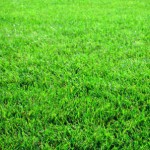Written by Ben Edington
The summer of 2012 is shaping up to be one of the driest summers on record. Many plants are suffering as a result. With some municipalities asking for volunteered water restrictions, knowing when, how and what to water is critically important when dealing with drought. Also, knowing what other steps can be taken to reduce plant stress will help plants to make it through the drought.
By paying special attention to your landscape, you can determine what plants will and will not need watered. In general, play close attention to newly planted trees and shrubs. Since they do not have an established root system their ability to obtain moisture will be limited. Transplants need 10 gallons of water per inch of trunk diameter every week. Established trees and shrubs will be better able to withstand drought conditions. Plants respond to drought by closing their stomates. This stops the flow of water through the tree and reduces transpiration. The side effect is that some leaves will prematurely wither and fall off. Most mature plants have adapted to survive some defoliation without severe consequence. However, if defoliation reaches most of the canopy or happens in consecutive years, it can begin to harm the tree. Also, certain species are less adapted to deal with a lack of water such as Dogwoods, Hemlocks, Beech, Pin Oak, and Redbud. Trees and shrubs particularly adapted to withstand drought are Eastern Redcedar, Panicled Goldenrain Tree, Bur Oak, Sassafras, Chokeberry, Barberry, Floweringquince, Witchhazel, Juniper, Bayberry, Ninebark, Bush Cinquefoil, Lilac, Spirea and Virginia Sweetspire. Once established these plants should need little additional watering.
IRRIGATION
Supplemental watering should be done early in the day. At this time less water is lost to evaporation. Watering late in the day also leaves leaf surfaces wet overnight, increasing the incidence of foliar diseases. Irrigate so that the upper 8 to 12 inches of soil is moist. Most plant roots are in the upper 12 inches of soil and there is no need to water any deeper. This is effectively achieved through the use of soaker hoses, drip irrigation and micro-sprays. Plants should receive occasional deep soaking rather than many shallow waterings.
If you are fortunate enough to have an irrigation system, it too should be checked. Watch for broken or misdirected heads that waste water by leaking onto paved surfaces. Also, make sure zones for turf are separated from trees and shrubs. Their watering needs are vastly different. Update your system with a soil moisture sensor that lets the control box know when water is needed and turns the system off when adequate moisture is reached. A well designed irrigation system will save you money and headaches down the road.
MULCH
Make sure landscape beds are mulched. Hardwood mulch reduces evaporation of moisture from the soil, helps insulate plants, reduces weeds, and helps to improve soil as it breaks down and becomes organic matter. A mulch layer should be 2-4 inches and never mounded around trunks. Making sure landscapes beds are mulched will help plants during the drought and reduce water loss.
PRUNING
Trees and shrubs stressed by drought may experience dieback and have dead branches in them. It is important to remove dead or dying branches as they can serve as entry points for insects and disease. Dead branches can also become falling hazards to people and property depending on their location. Proper pruning will lead to the plant healing correctly and reduce future stress on the plant.
FERTILIZATION
Water and nutrients are critical in many physiological processes inside plants. As plants become drought stressed, these processes become interrupted. As a result the plant may thin and weaken. Moreover, dry conditions can exacerbate nutrient problems. As nutrients become bound to the soil, deficiencies such as interveinal chlorosis on oak and maples may become more apparent. Fertilizing may help some trees under these stressed conditions but applications should be made only in spring or fall when temperatures moderates and sufficient moisture returns. Myccorhizae inoculation will also help trees in this state. By combining to tree roots and creating a symbiotic relationship, this fungi help tree roots increase surface area and efficiently absorb water and nutrients.
INSECT AND DISEASE
Stressed plants are very susceptible to insect and disease outbreaks. Because they lack the resources to fend off these pest attacks, it is easy for pest population to grow exponentially. Borers and mites as well as cankers and other diseases are of particular concern. Many pests are opportunistic in the fact that they wait for the plant to become stressed and move in to finish off the plant. Doing routine scouting can help recognize when these populations are getting out of control and help prevent future problems. By monitoring trees and shrubs and controlling pest when necessary, you can make sure additional stresses do not cause more harm to the tree.
If you are unfortunate enough to have lost plants already or think you may lose plants if conditions continue, consider the type of plant that was there, what the site is like, and if there may be a more appropriate plant for the location. Feel free to talk to the knowledgeable staff at Mark Holeman, Inc. They can help select plants, help with mulching or pruning questions, or help identify insect, disease or nutrient issues. With the right information we can help get your landscape through the current conditions and looking good as we move forward.
